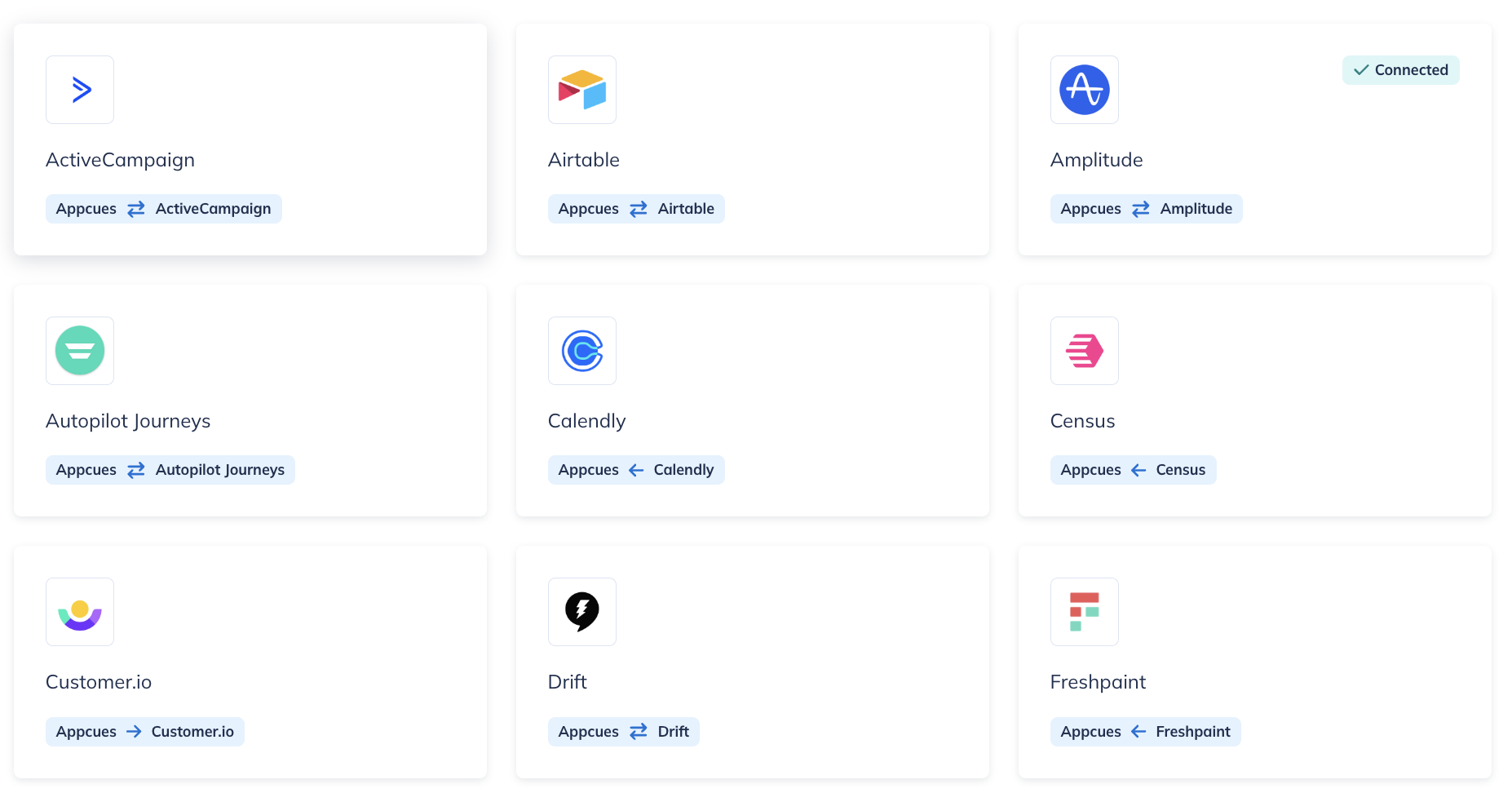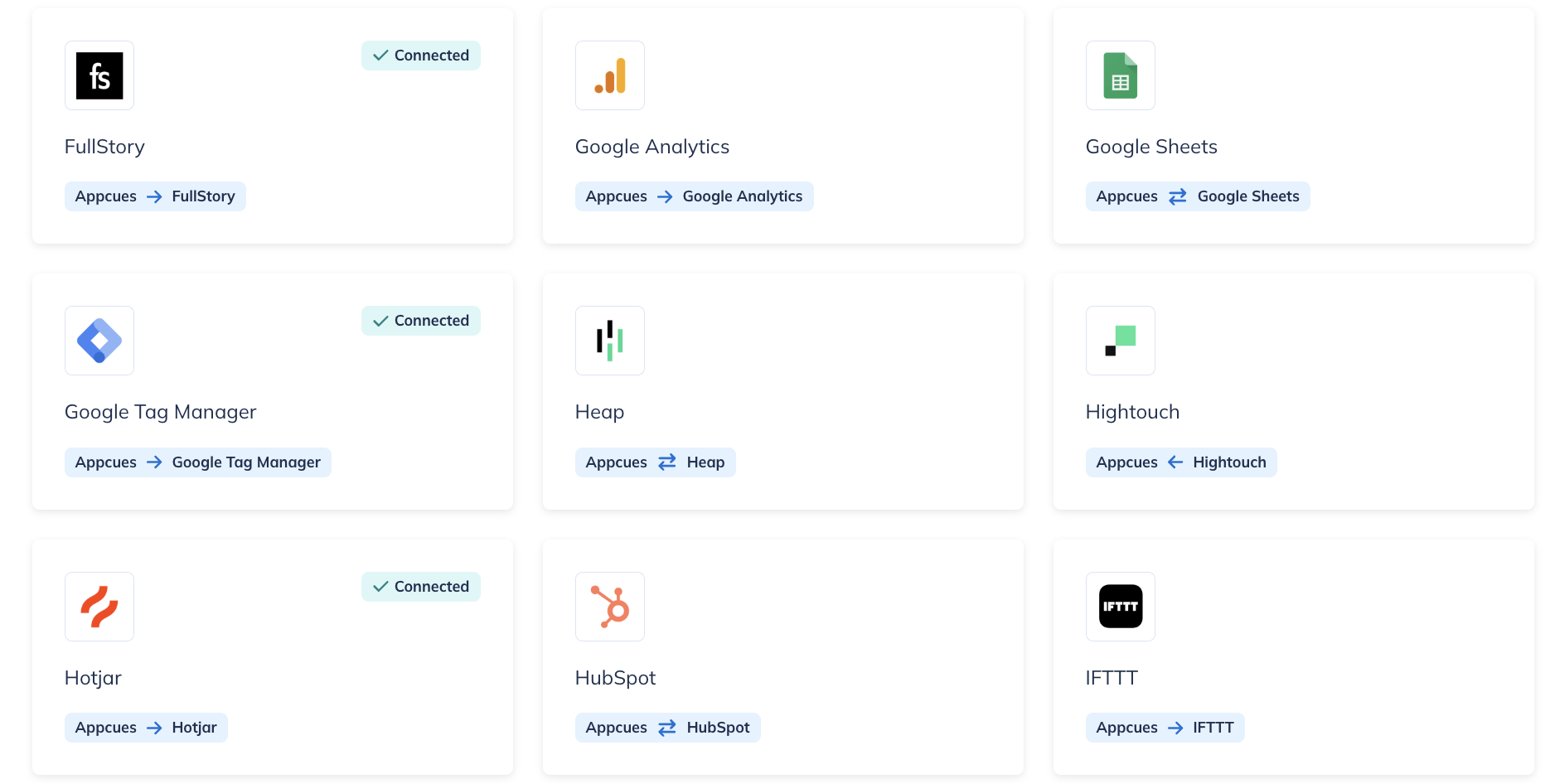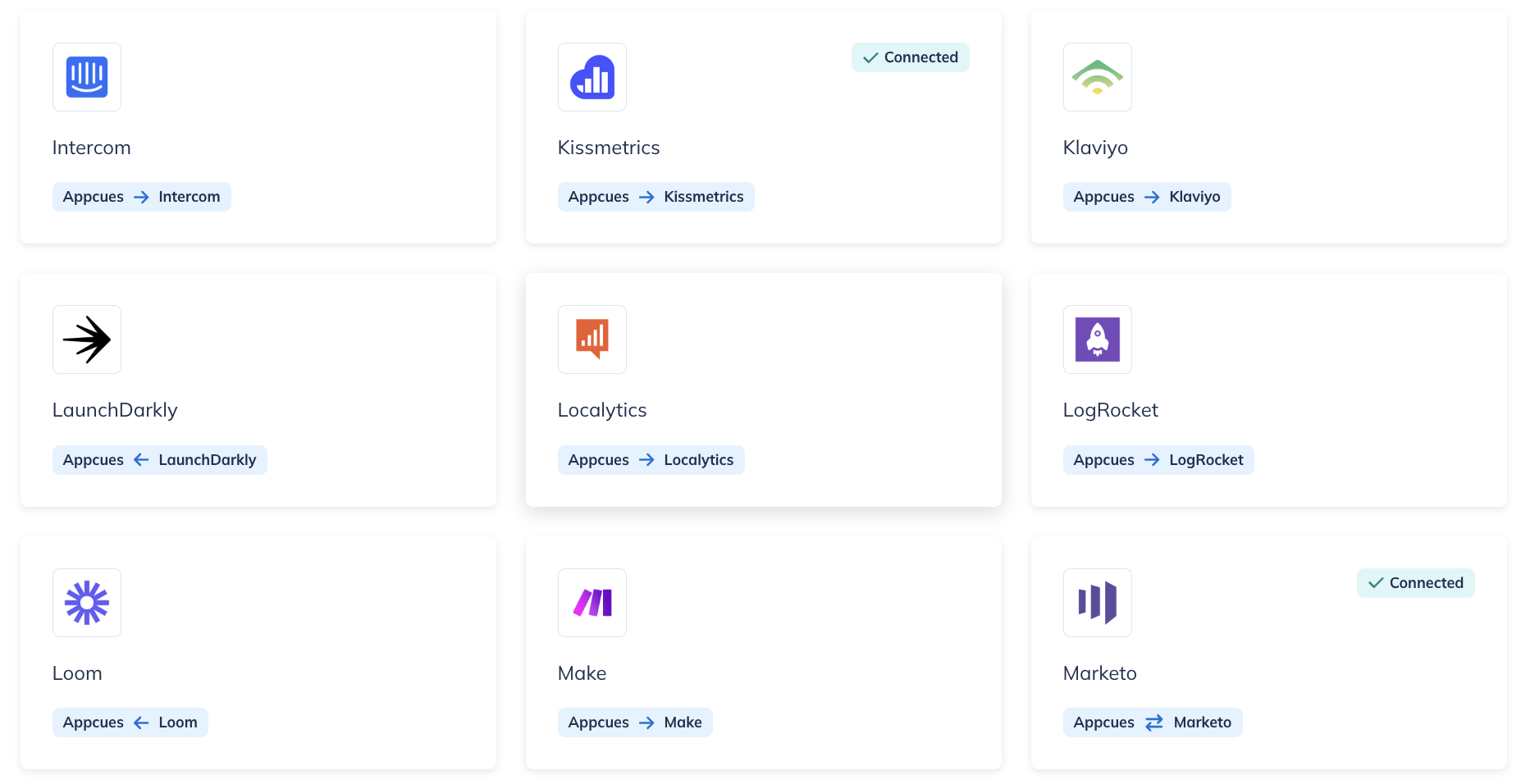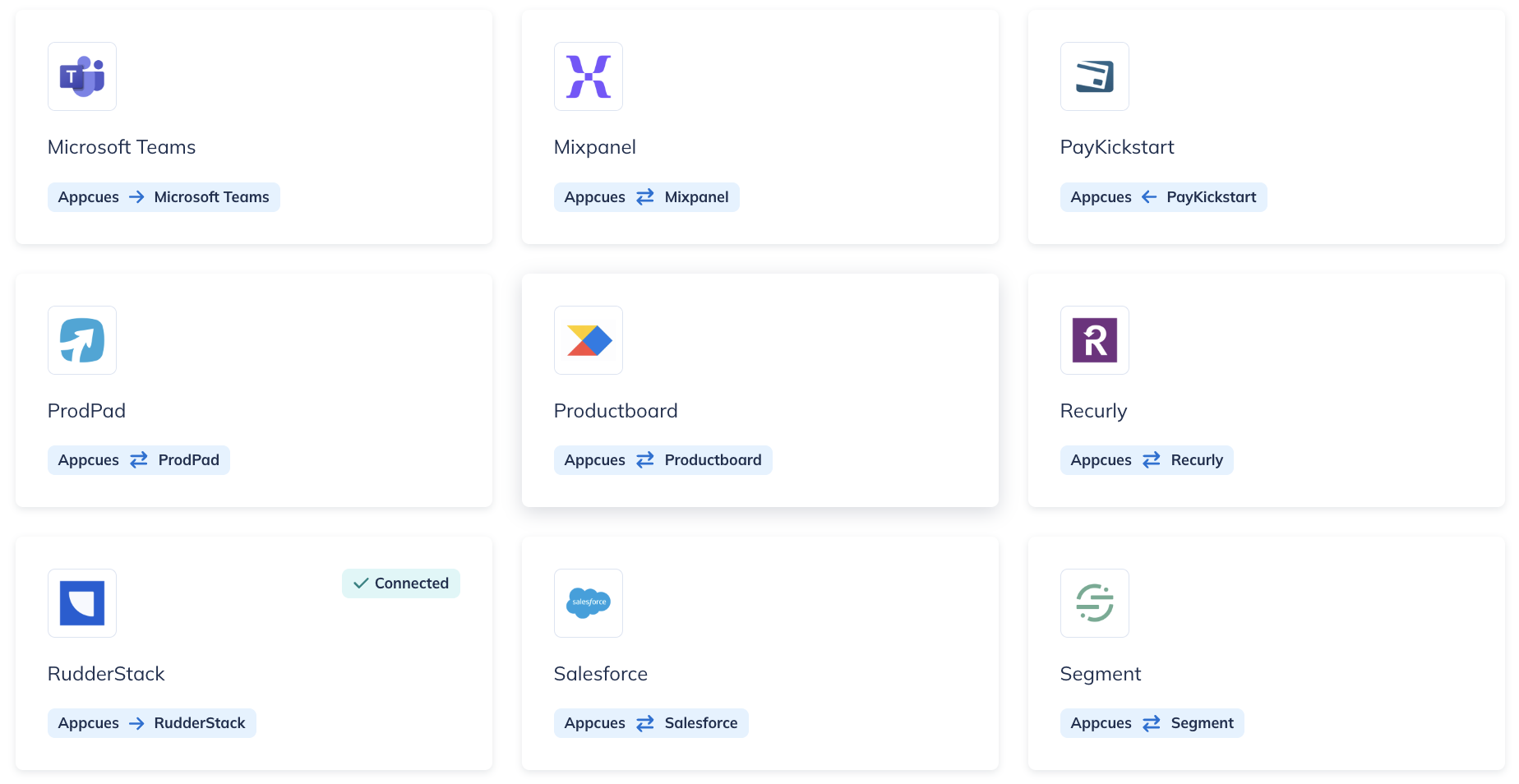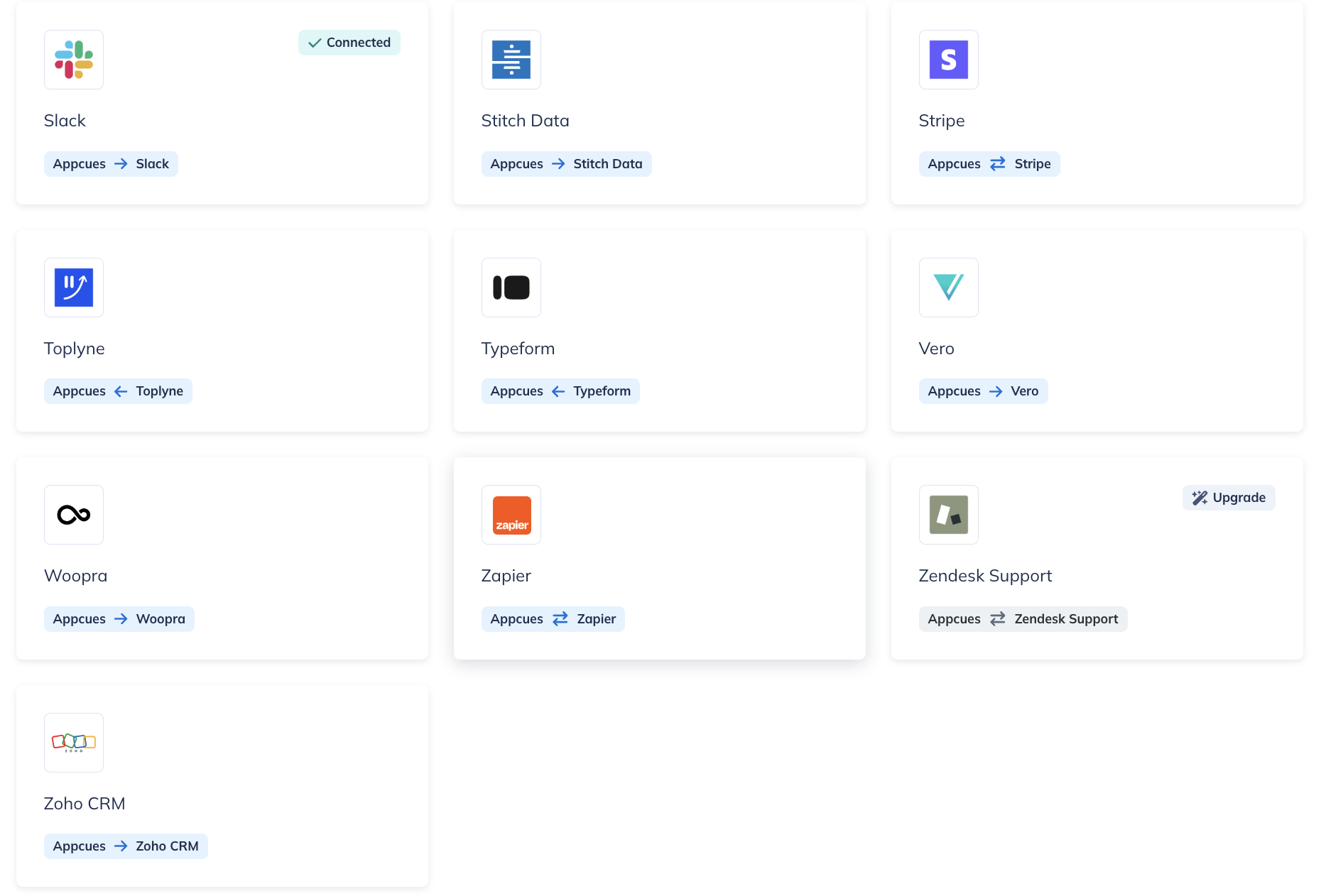Appcues Integrations Overview
Learn more about the tools you can integrate Appcues with.
Table of Contents
This document covers details of web integrations. For details on mobile integrations, see the Mobile Integrations doc.
Using Appcues' third-party web integrations, you can send Appcues data to services like Google Analytics, Mixpanel, and HubSpot.
Intro to integrations
There are two types of integrations:
- One-way integration: Appcues sends data to the third-party, but does not receive data.
- Two-way integration: Appcues sends and receives data from the third-party.
Please view the specific integration ( or the Integration list) to determine whether it is a one-way or two-way integration.
What data is sent?
Activated integrations receive information about who interacts with your Appcues flows and what they did. Here are some common business questions you'll be able to answer with a third-party analytics tool like Mixpanel if you have the Appcues integration turned on:
- How many people have seen my Appcues onboarding flow in the past 7 days?
- I have 5 hotspots on my dashboard; how many have customers engaged with?
- Of the trial users who saw my Appcues modal, how many ended up becoming customers?
In most cases, Appcues sends data in the form of an event. You can read more about the type of events we send in our Analytics Events doc. The way those events are represented by third-party vendors differ, so please see the individual docs for the integration you're most curious about.
*NOTE* Appcues will send all Appcues Analytics Events when you turn on any integration. There is no picking and choosing which events get sent.
How do I activate an integration?
From Studio, select Settings > Integrations > Connections.
In most cases, the integration requires only one click in order to be activated. Some integrations are client-side integrations, which means they talk to your other apps through the user's browser in order to send information about Appcues activity. You'll need to have the third-party's javascript installed in your app for this to work.
Other integrations, like HubSpot or Zapier, work by directly communicating behind the scenes, or server-side—and may require some information, like an account ID or Legacy API key (called the API Key for legacy plan customers), in addition to a short authentication process.

How do I know it's working?
Most third-party services do have a bit of a delay before data trickles into those systems. To properly test the integration after it's activated, use an Appcues permalink to view a flow you've published and simply start interacting with it. Once you've clicked through it, check on your third-party tool to see if data is flowing in as you expected.
Who do we have integrations with?
Check out a full list of integrations here! Let us know which other tools you'd like to connect with Appcues by filling out this quick form.
